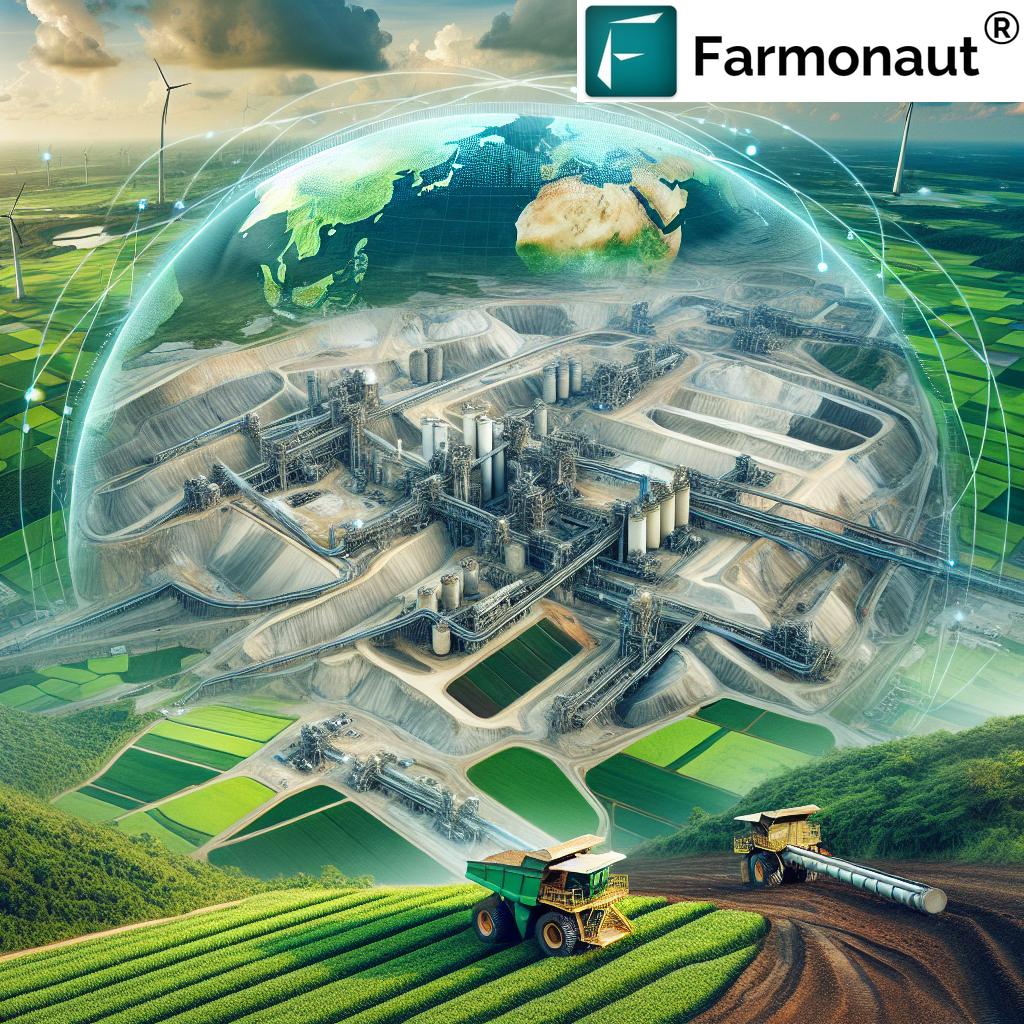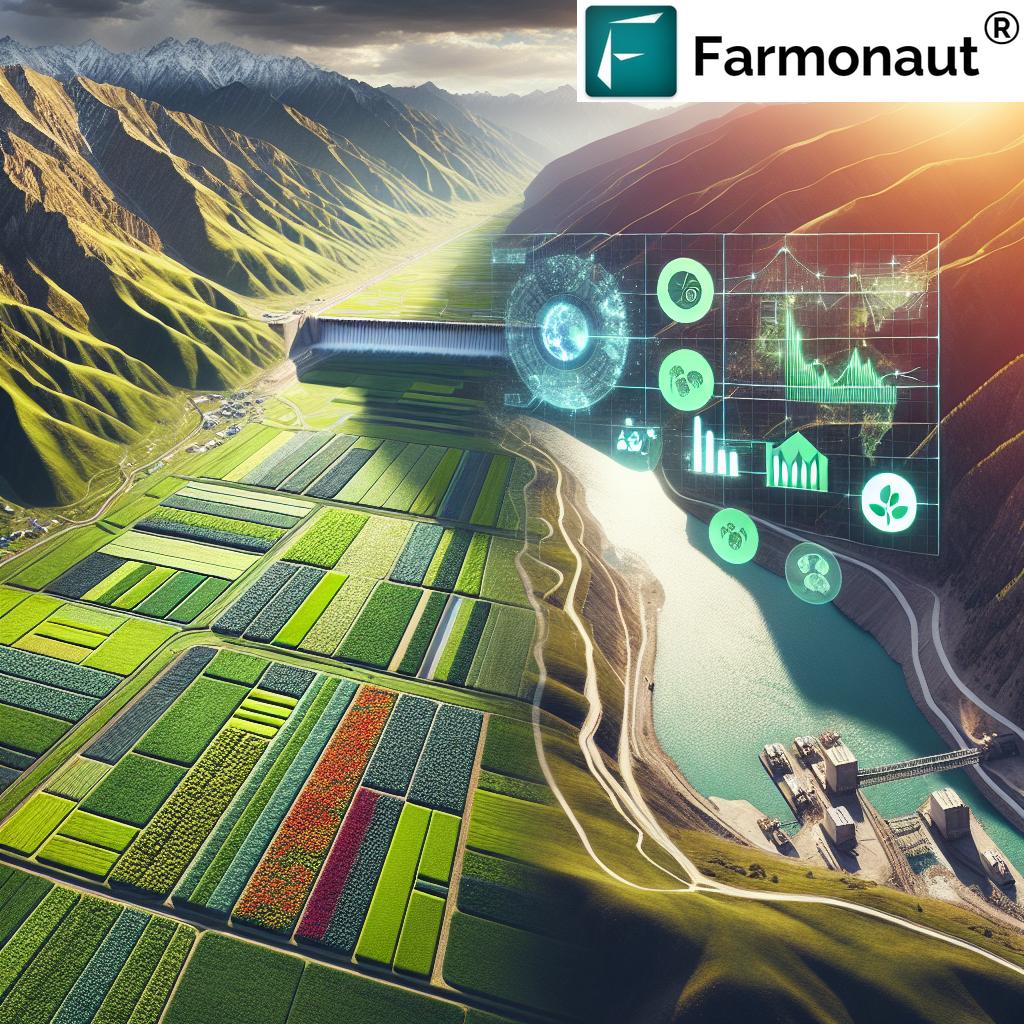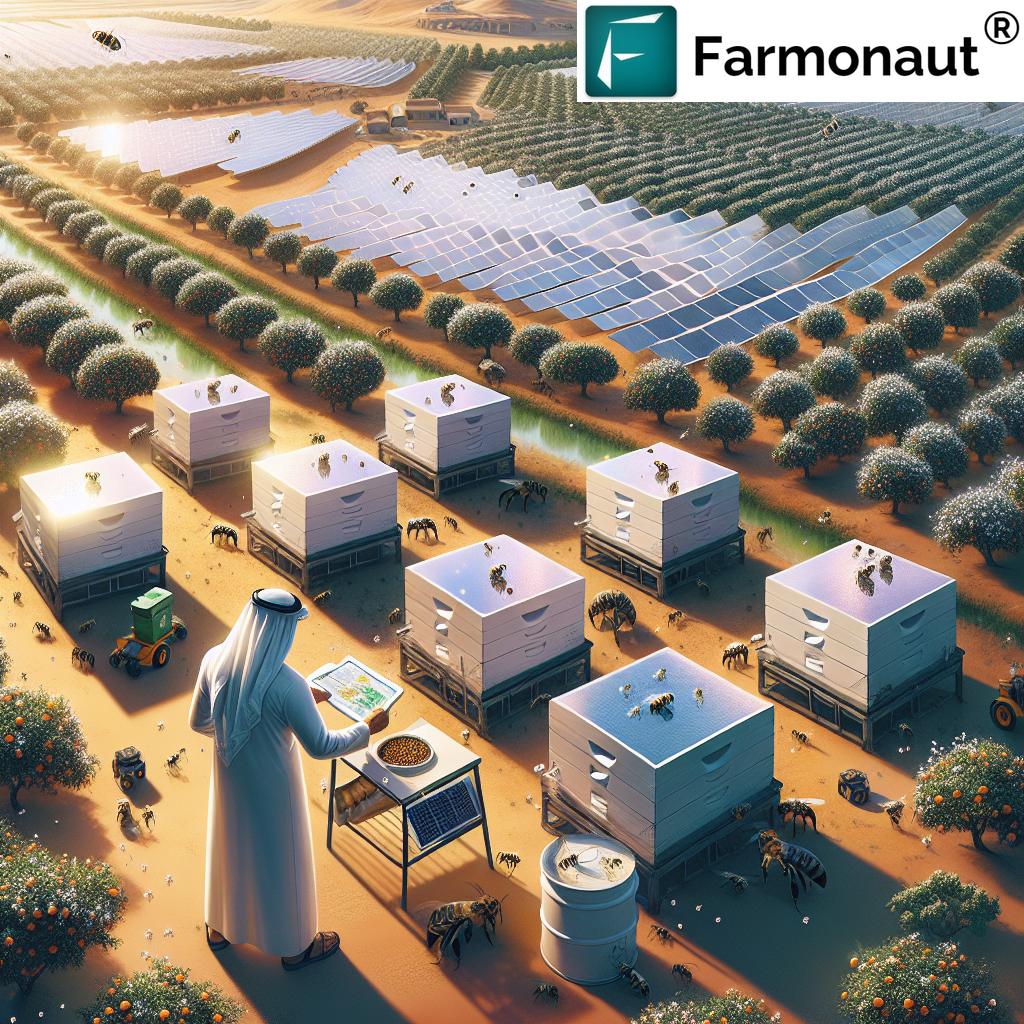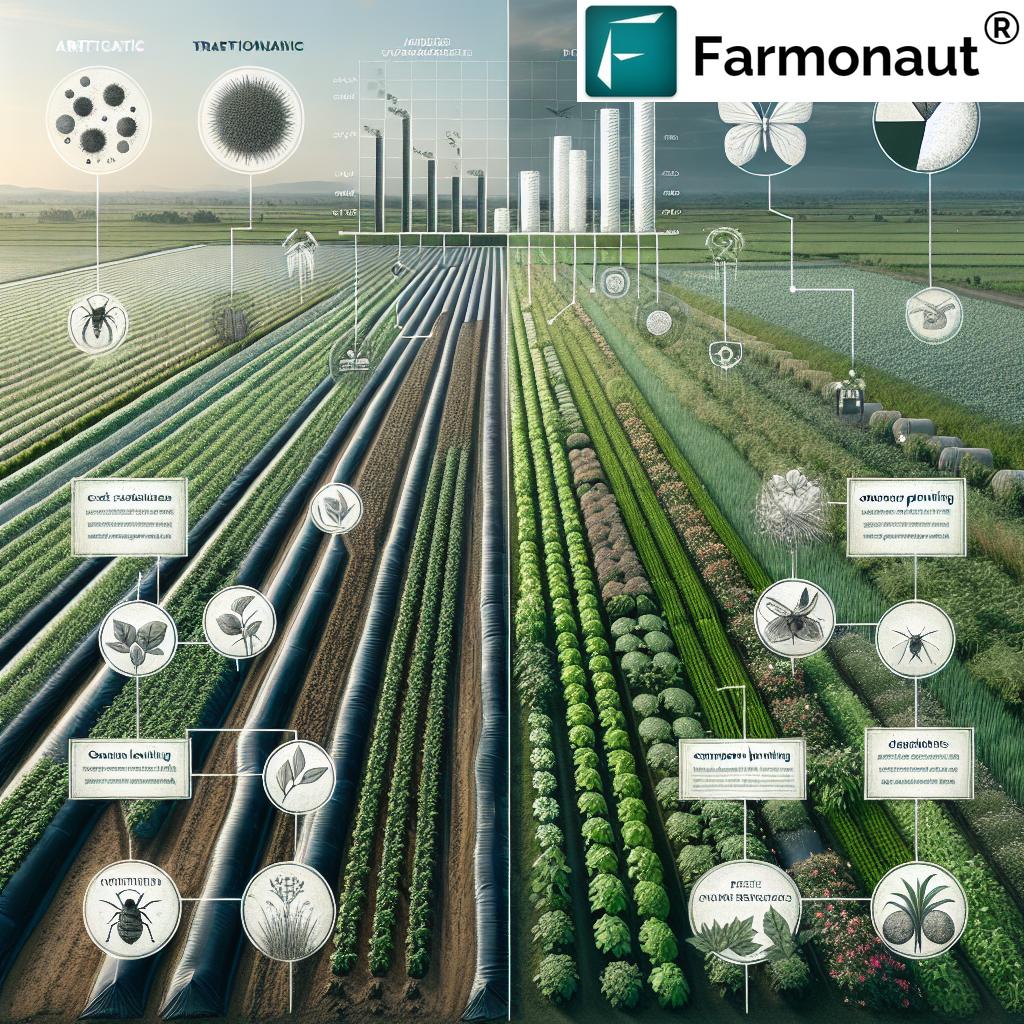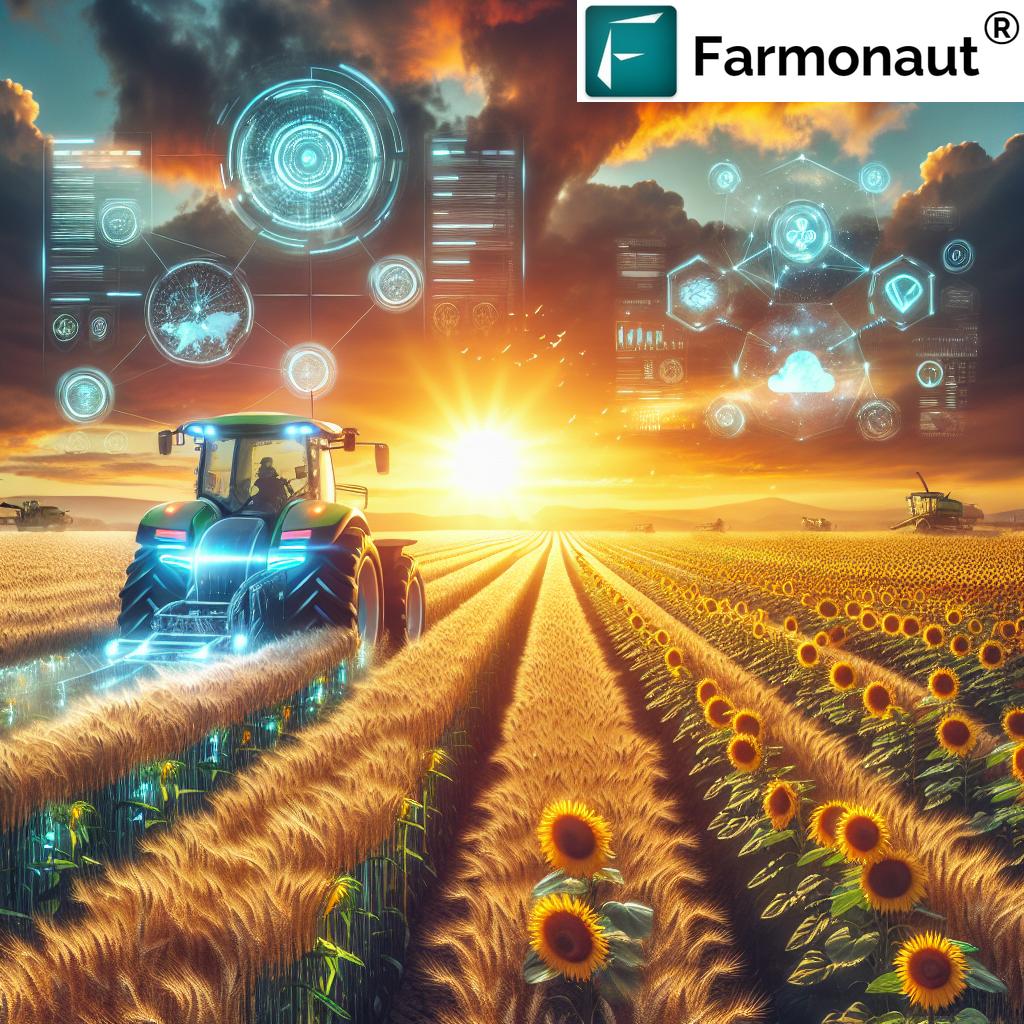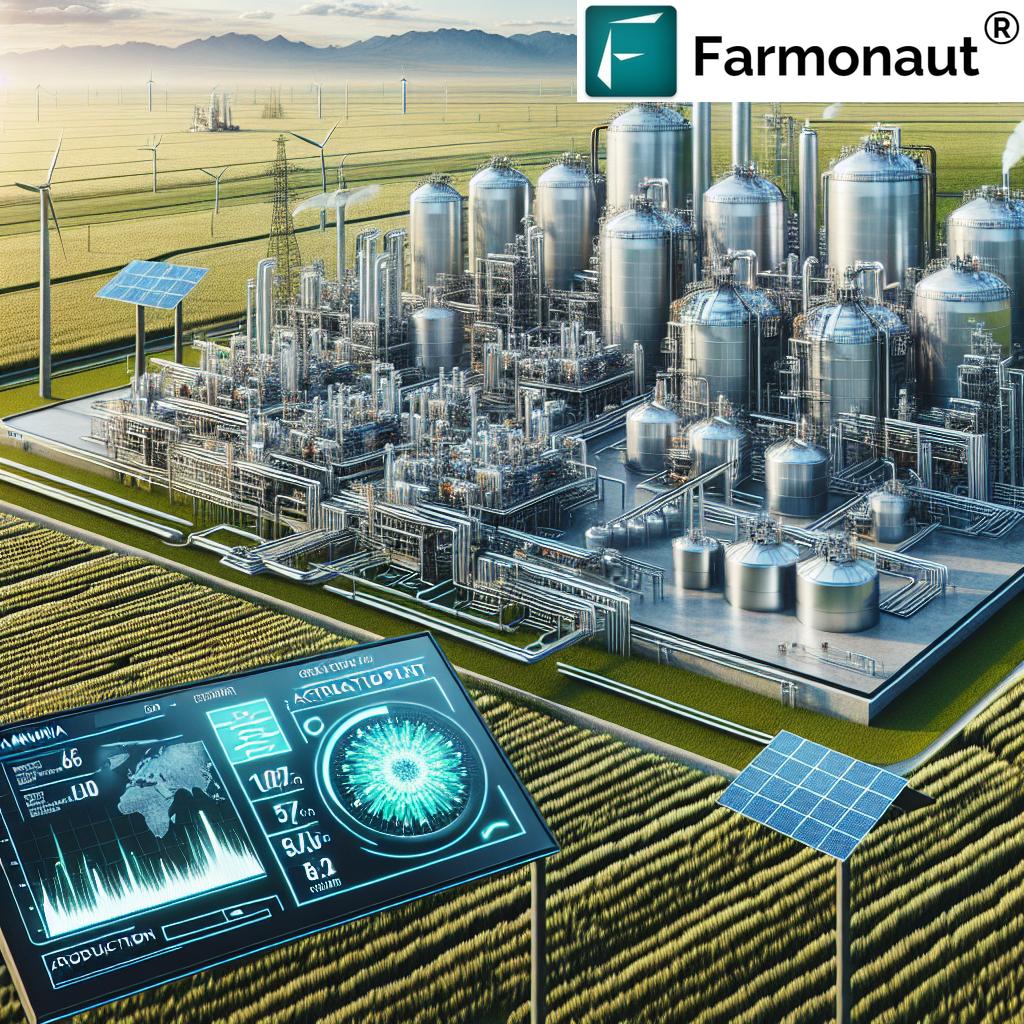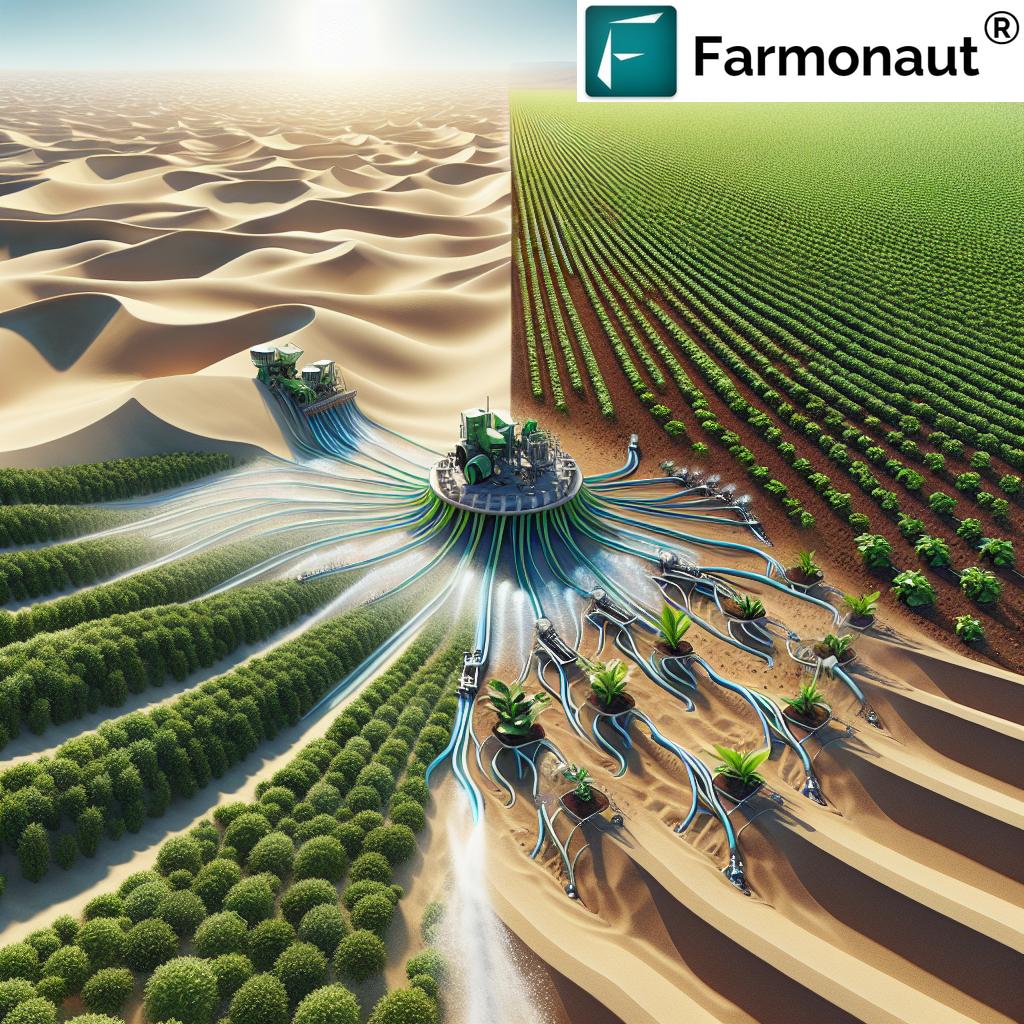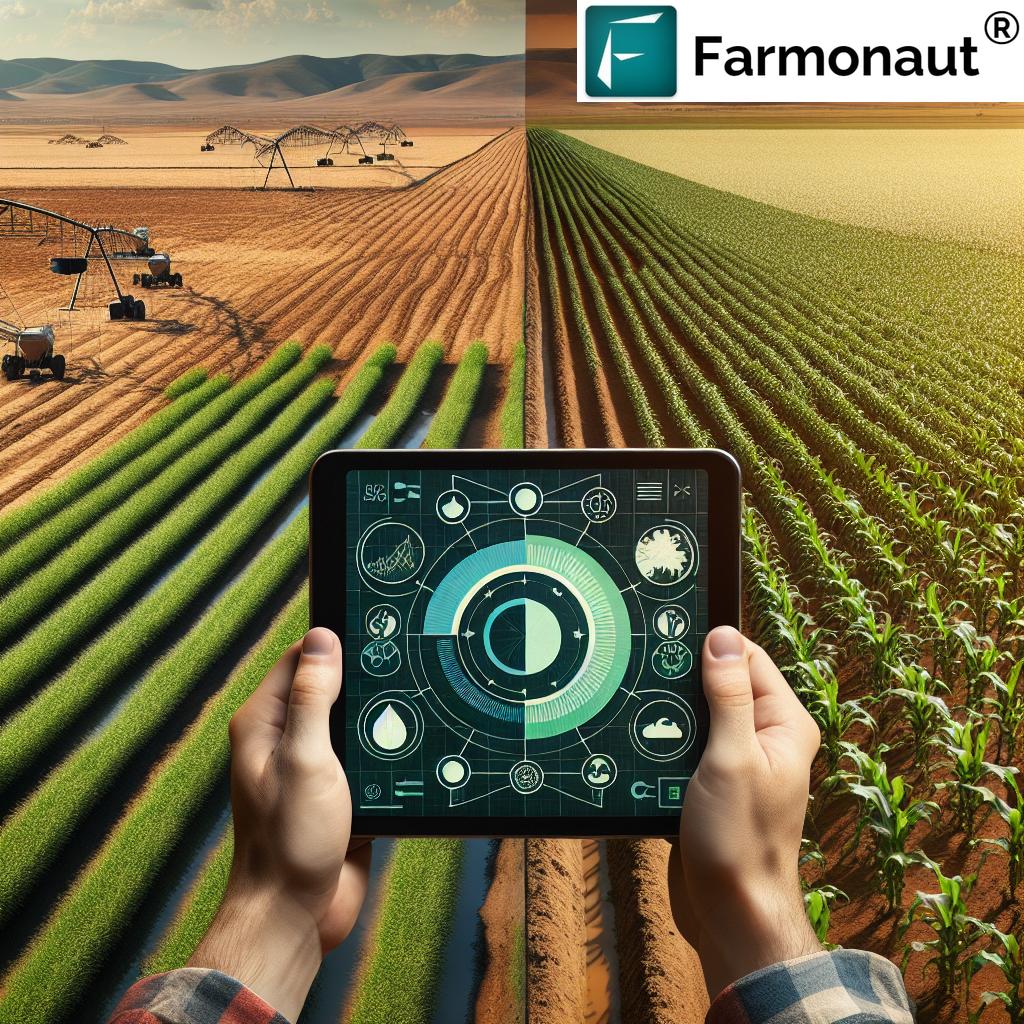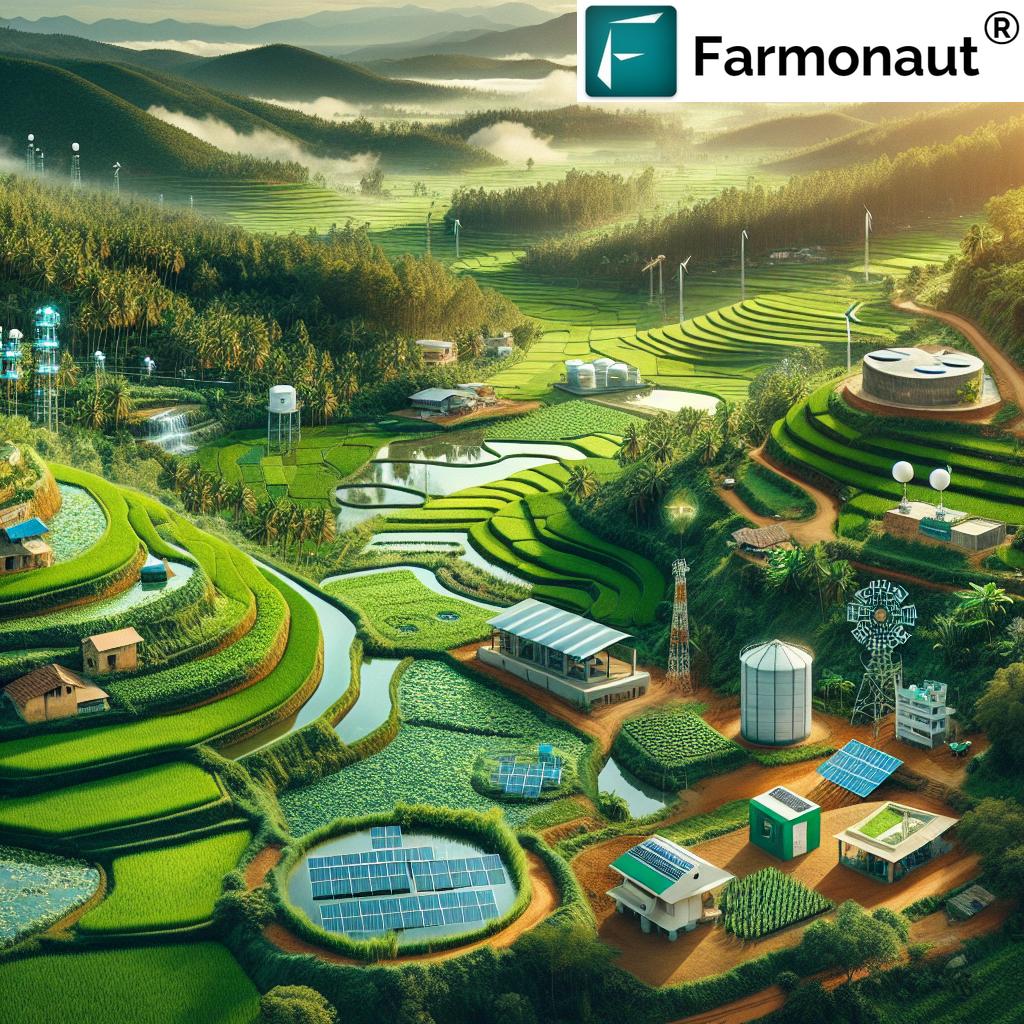Japan’s Agricultural Revolution: AI, IoT, and Sustainable Farming Reshape Tokyo’s Food Future
“Japan aims to increase its food self-sufficiency rate, which currently stands at about 38%, through innovative farming technologies.”
As we delve into Japan’s agricultural revolution, we’re witnessing a remarkable transformation that’s reshaping the future of farming in one of the world’s most technologically advanced nations. From the bustling streets of Tokyo to the serene countryside, Japan is embracing sustainable agriculture and innovative farming practices with unprecedented vigor. In this comprehensive exploration, we’ll uncover how AI, IoT, and cutting-edge technologies are revolutionizing crop production and management, while addressing critical challenges such as food waste reduction and environmental conservation.
The Dawn of Precision Farming in Japan
Japan’s agricultural sector is undergoing a profound metamorphosis, driven by the urgent need to increase food self-sufficiency and adapt to changing climatic conditions. At the forefront of this change is the widespread adoption of precision farming technologies, which are helping Japanese farmers optimize their yields while minimizing resource usage.
- Satellite-based crop monitoring: Advanced satellite imagery is enabling farmers to assess crop health remotely, leading to more precise interventions.
- IoT sensors for soil management: Smart sensors deployed across farmlands provide real-time data on soil moisture, temperature, and nutrient levels.
- AI-powered predictive analytics: Machine learning algorithms analyze historical and real-time data to forecast crop yields and potential issues.
These technologies are not just improving efficiency; they’re transforming the very nature of farming in Japan. For instance, in Gunma and Yamanashi prefectures, farmers are using AI and IoT to optimize the production of their famous fruits and vegetables, including the prized Koshu grapes and juicy peaches.
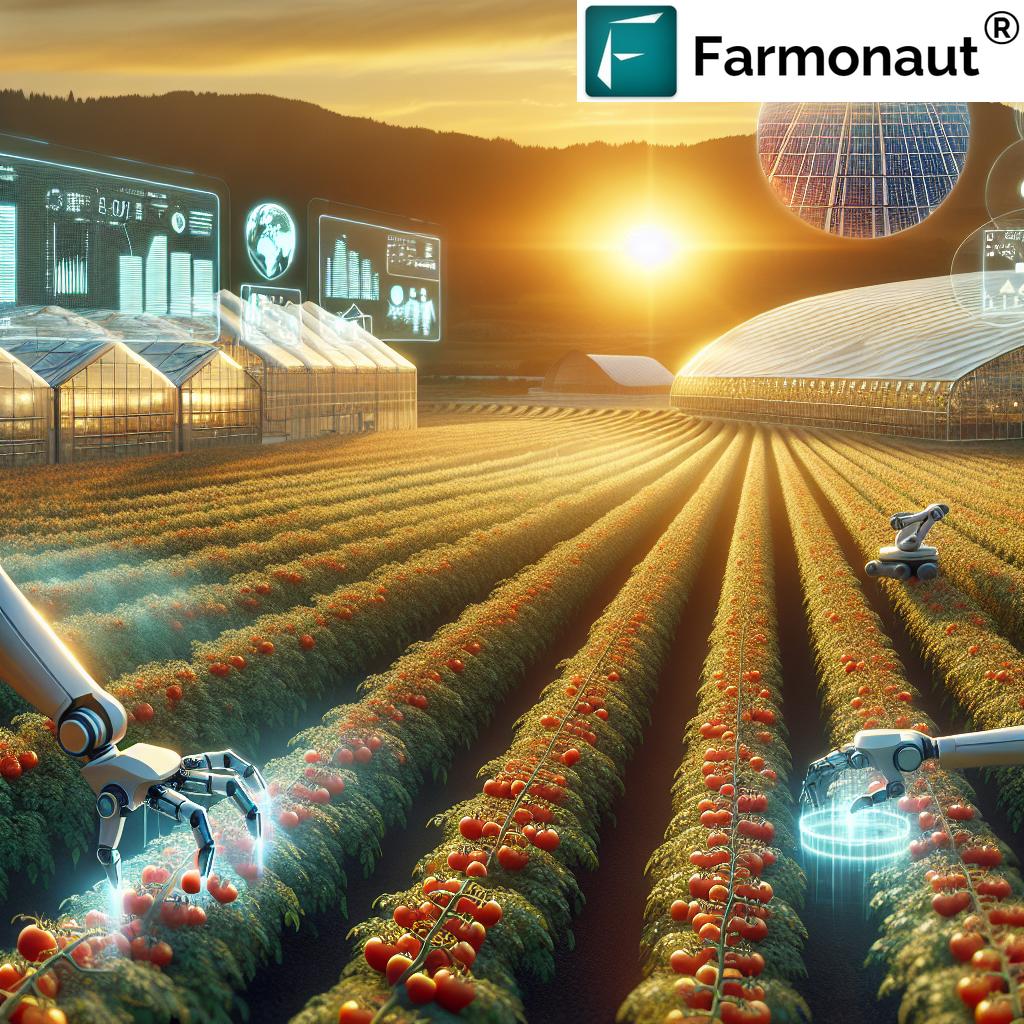
As we explore these innovative approaches, it’s worth noting that companies like Farmonaut are at the forefront of providing advanced agricultural solutions globally. While not specifically operating in Japan, Farmonaut’s satellite-based farm management solutions offer similar benefits to those being adopted by Japanese farmers. Their platform provides real-time crop health monitoring, AI-based advisory systems, and resource management tools that align with Japan’s agricultural innovation trends.
IoT: The Backbone of Smart Farming in Japan
The Internet of Things (IoT) has become the backbone of smart farming solutions in Japan. By connecting various devices and sensors, farmers can create a comprehensive network that monitors and manages every aspect of their agricultural operations.
- Automated irrigation systems: IoT-enabled irrigation systems adjust water usage based on real-time soil moisture data, reducing waste and optimizing plant growth.
- Climate control in greenhouses: Smart greenhouses in Japan use IoT devices to maintain optimal growing conditions for crops like tomatoes and orchids.
- Livestock monitoring: IoT sensors track the health and behavior of livestock, enabling early detection of diseases and improving animal welfare.
In Tokyo and surrounding areas, urban farming initiatives are leveraging IoT to create efficient rooftop gardens and vertical farms. These smart urban agricultural systems are not only producing fresh vegetables for local consumption but also contributing to the reduction of the urban heat island effect.
While we’re discussing IoT applications in agriculture, it’s worth mentioning that Farmonaut offers similar IoT integration capabilities through its platform. Farmers can access real-time data and insights through Farmonaut’s web app, Android app, and iOS app, making it easier to manage their farms from anywhere.
AI in Agriculture: Revolutionizing Crop Management
Artificial Intelligence is playing a pivotal role in revolutionizing crop management across Japan. From planting to harvesting, AI applications are enhancing decision-making processes and automating complex tasks.
- Crop disease detection: AI-powered image recognition systems can identify plant diseases early, allowing for timely interventions.
- Optimal planting schedules: Machine learning algorithms analyze historical weather data and market trends to suggest the best times for planting different crops.
- Robotic harvesting: AI-guided robots are being developed to harvest delicate crops like strawberries and tomatoes, addressing labor shortages in rural areas.
In prefectures like Ibaraki and Chiba, known for their diverse agricultural output, AI systems are helping farmers optimize the production of everything from rice to lotus roots. These systems analyze factors such as soil composition, weather patterns, and market demand to provide tailored recommendations for each crop.
“Tokyo’s metropolitan government plans to reduce food waste by 50% by 2030 through various initiatives and technologies.”
Sustainable Agriculture: Japan’s Eco-Friendly Farming Practices
As global concerns about climate change and environmental degradation grow, Japan is intensifying its focus on sustainable agriculture and eco-friendly farming practices. The government and private sector are collaborating to implement innovative solutions that reduce the environmental impact of farming while maintaining high productivity.
- Organic farming promotion: Japan is increasing support for organic farming methods, aiming to expand organic farmland to 25% of total arable land by 2050.
- Biodegradable mulch films: Researchers are developing plant-based mulch films that decompose naturally, reducing plastic waste in agriculture.
- Water-saving technologies: Advanced irrigation systems and drought-resistant crop varieties are being introduced to conserve water resources.
In regions like Hokkaido, known for its vast agricultural lands, farmers are adopting sustainable practices such as crop rotation and reduced tillage to improve soil health and biodiversity. These methods not only benefit the environment but also enhance the quality and flavor of produce, contributing to Japan’s renowned culinary culture.

It’s important to note that while we’re focusing on Japan’s efforts, sustainable agriculture is a global concern. Platforms like Farmonaut contribute to this global effort by providing tools for efficient resource management and promoting sustainable farming practices through their AI-driven advisory systems.
Food Waste Reduction: Innovative Strategies in Japan
Addressing food waste is a critical component of Japan’s agricultural revolution. With the Tokyo metropolitan government aiming to halve food waste by 2030, innovative strategies are being implemented across the food supply chain.
- AI-powered demand forecasting: Supermarkets and restaurants are using AI to predict consumer demand more accurately, reducing overstocking and waste.
- Upcycling food waste: Companies are developing new products from food byproducts, such as using vegetable scraps to create new food items or cosmetics.
- Smart packaging: IoT-enabled packaging with sensors can monitor food freshness and alert consumers before products spoil.
In cities like Yokohama and Osaka, community-led initiatives are encouraging food sharing and composting. These grassroots efforts, combined with technological solutions, are creating a more circular and sustainable food economy in Japan.
High-Tech Greenhouses: Year-Round Production in Japan
Japan’s limited arable land and unpredictable weather patterns have led to significant investments in high-tech greenhouses. These controlled environment agriculture (CEA) facilities are enabling year-round production of crops, including those traditionally challenging to grow in Japan’s climate.
- Vertical farming: Multi-story indoor farms in urban areas are producing leafy greens and herbs with minimal water and land use.
- LED lighting systems: Specialized LED lights are optimizing plant growth and increasing crop yields in greenhouse environments.
- Hydroponic and aeroponic systems: Soil-less growing methods are being perfected to produce high-value crops like strawberries and tomatoes with enhanced flavor profiles.
In prefectures like Miyagi and Fukushima, which faced agricultural challenges following the 2011 disaster, high-tech greenhouses are playing a crucial role in revitalizing the local farming industry. These facilities not only ensure stable production but also create new employment opportunities in rural areas.
While discussing advanced agricultural technologies, it’s worth noting that Farmonaut’s satellite-based monitoring can complement greenhouse operations by providing valuable data on external environmental conditions. This integration of satellite data with greenhouse management systems represents the cutting edge of precision agriculture.
Protecting Endangered Species Through Agricultural Innovation
Japan’s agricultural revolution isn’t just about increasing productivity; it’s also addressing critical environmental concerns, including the protection of endangered species. Innovative farming practices are being developed to create harmonious ecosystems where agriculture and wildlife can coexist.
- Wildlife-friendly farming: Farmers are implementing techniques that provide habitats for endangered birds and insects within agricultural landscapes.
- Biodiverse rice paddies: Traditional rice farming methods are being revived and enhanced to support aquatic life, including endangered frog species.
- Pollinator protection programs: Initiatives to protect and promote native bee populations are being integrated into farming practices across Japan.
In regions like Toyooka City in Hyogo Prefecture, farmers are collaborating with conservationists to create rice fields that serve as habitats for the endangered Oriental White Stork. This approach not only helps protect biodiversity but also adds value to agricultural products through eco-friendly branding.
Economic Challenges and Technological Solutions
Despite the innovative strides in Japanese agriculture, the sector faces significant economic challenges. An aging farming population, declining rural communities, and competition from imports are pressing issues. However, technology is offering promising solutions to these challenges.
- Labor-saving automation: Robotic systems and AI-powered machinery are helping to address labor shortages in rural areas.
- Direct-to-consumer platforms: Digital marketplaces are enabling farmers to sell directly to consumers, increasing profit margins and fostering community connections.
- Precision agriculture for cost reduction: Advanced farming technologies are helping to reduce input costs and improve profitability, especially for small-scale farmers.
In prefectures like Nagano and Niigata, known for their rice production, farmers are leveraging technology to reduce labor costs and improve the quality of their crops. These efforts are not only making farming more economically viable but also attracting younger generations to agriculture.
While we’re discussing economic solutions in agriculture, it’s worth mentioning that platforms like Farmonaut offer cost-effective precision agriculture tools. Their satellite-based monitoring and AI advisory systems can help farmers optimize their operations without the need for expensive on-ground sensors, making advanced agricultural technologies more accessible to farmers of all scales.
Government Initiatives and Policy Support
The Japanese government plays a crucial role in driving the agricultural revolution through policy initiatives and financial support. These efforts are aimed at increasing food self-sufficiency, promoting sustainable practices, and revitalizing rural economies.
- Smart agriculture subsidies: The government offers financial incentives for farmers adopting IoT and AI technologies in their operations.
- Research and development funding: Significant investments are being made in agricultural R&D, focusing on areas like crop resilience and sustainable farming methods.
- Regulatory reforms: Changes in land use laws and agricultural corporation regulations are making it easier for new entrants and technologies to enter the farming sector.
The Ministry of Agriculture, Forestry and Fisheries (MAFF) has set ambitious targets for increasing Japan’s food self-sufficiency rate. These goals are supported by comprehensive programs that encourage the adoption of smart farming technologies and sustainable practices across the country.
The Future of Japanese Agriculture: Trends and Projections
As we look to the future, several trends are shaping the trajectory of Japanese agriculture:
- Increased integration of AI and robotics: We expect to see more autonomous farming systems, from planting to harvesting.
- Expansion of urban agriculture: Vertical farms and rooftop gardens in cities like Tokyo are likely to become more prevalent.
- Focus on functional foods: Research into crops with enhanced nutritional profiles or medicinal properties is gaining momentum.
- Climate-resilient agriculture: Development of crop varieties and farming methods adapted to changing climate conditions will be prioritized.
These trends suggest a future where Japanese agriculture is more technologically advanced, environmentally sustainable, and closely integrated with urban life. The innovations developed in Japan are likely to have global implications, offering solutions to agricultural challenges faced worldwide.
Japanese Agricultural Technology Adoption Rates
| Technology Type | Adoption Rate in 2013 (%) | Adoption Rate in 2023 (%) | Projected Adoption Rate in 2028 (%) | Primary Benefits |
|---|---|---|---|---|
| AI-powered crop management | 5 | 35 | 60 | Improved yield prediction, disease detection |
| IoT sensors for soil monitoring | 10 | 50 | 75 | Optimized resource use, real-time data |
| Precision farming tools | 15 | 45 | 70 | Reduced input costs, increased efficiency |
| High-tech greenhouses | 20 | 40 | 65 | Year-round production, climate control |
| Robotic harvesting systems | 2 | 25 | 50 | Labor shortage mitigation, consistent quality |
Conclusion: A New Era for Japanese Agriculture
Japan’s agricultural revolution represents a bold step into the future of farming. By embracing AI, IoT, and sustainable practices, the country is not only addressing its unique challenges but also setting a global standard for innovative and responsible agriculture. From the high-tech greenhouses of urban Tokyo to the AI-managed rice fields of rural prefectures, Japan is demonstrating how technology and tradition can be harmoniously blended to create a more sustainable and productive agricultural sector.
As we’ve explored throughout this article, the transformation of Japanese agriculture is multifaceted, involving technological innovation, policy support, and a shift in farming philosophies. The adoption of precision farming technologies, the implementation of food waste reduction strategies, and the focus on eco-friendly practices are all contributing to a more resilient and sustainable food system.
While companies like Farmonaut are not directly involved in Japan’s agricultural scene, their global contributions to precision agriculture align with many of the trends we’re seeing in Japan. The satellite-based monitoring, AI advisory systems, and resource management tools offered by such platforms represent the kind of technologies that are driving agricultural innovation worldwide.
As Japan continues to navigate challenges such as an aging farming population and the need for increased food self-sufficiency, the innovations emerging from its agricultural sector will undoubtedly have far-reaching impacts. The country’s journey towards a more technologically advanced and sustainable agricultural future offers valuable lessons and inspirations for nations around the world facing similar challenges.
In conclusion, Japan’s agricultural revolution is not just about adopting new technologies; it’s about reimagining the relationship between technology, nature, and human needs. As we look to the future, the innovations emerging from Japan’s fields and greenhouses may well hold the key to addressing some of the most pressing agricultural challenges of our time.
FAQs
- Q: How is AI being used in Japanese agriculture?
A: AI is used in various aspects of Japanese agriculture, including crop disease detection, optimal planting scheduling, robotic harvesting, and predictive analytics for yield forecasting. - Q: What role does IoT play in Japan’s smart farming solutions?
A: IoT devices are crucial in Japanese smart farming, enabling automated irrigation systems, climate control in greenhouses, and real-time monitoring of soil conditions and livestock health. - Q: How is Japan addressing its aging farming population?
A: Japan is addressing this challenge through increased automation, robotic systems, and initiatives to attract younger generations to agriculture using advanced technologies. - Q: What are some of Japan’s initiatives to reduce food waste?
A: Japan is implementing AI-powered demand forecasting, food upcycling projects, and smart packaging technologies to reduce food waste throughout the supply chain. - Q: How are high-tech greenhouses changing agriculture in Japan?
A: High-tech greenhouses in Japan are enabling year-round production of crops, utilizing vertical farming techniques, LED lighting systems, and hydroponic/aeroponic growing methods.









